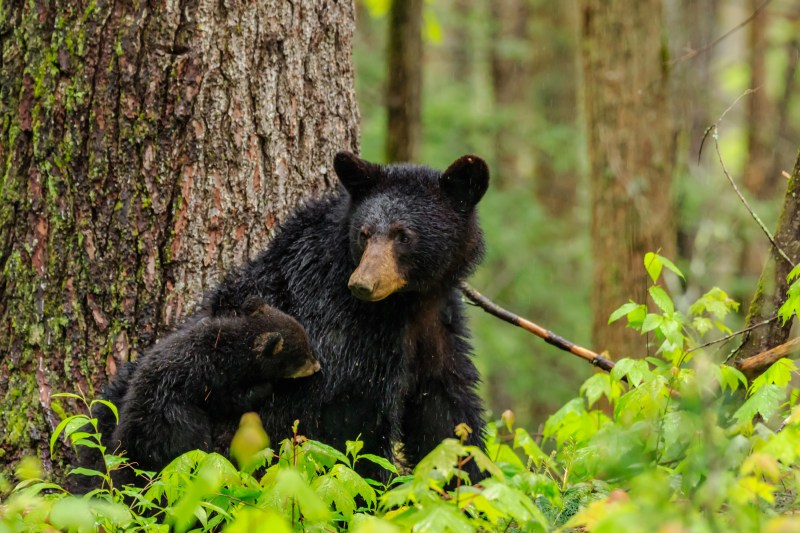Each year, national parks like Grand Teton and Yellowstone witness an influx of tourists eager to snap those stunning photos. Unfortunately, many cellphone-armed smartphone tourists have no idea how close they are to wildlife. This often leads to a rise in dangerous animal encounters, putting both people and animals at risk. These encounters can quickly turn dangerous, leading to injuries and, in some cases, the euthanization of the animals involved.
The problem has become so prevalent that in 2023, Yellowstone National Park issued a warning to tourists: “Leave it alone and give it space.” Despite such warnings, incidents of visitors approaching large animals, such as bison and bears, have continued to increase. To try and combat this, the National Park Service has also introduced hefty fines ranging from $100 to $5,000, depending on the severity of the infraction and the specific park’s rules. Repeat offenders or those who blatantly disregard the rules might even face civil penalties, including being held financially responsible for damages or costs related to wildlife management, such as relocating or euthanizing the animal.
But not everyone is leaving it up to the NPS. The Jackson Hole Travel & Tourism Board has just introduced a new tool aimed at keeping both visitors and wildlife safe: the Selfie Control Instagram filter. This innovative tool is designed to help tourists maintain a safe distance from animals while capturing the perfect photo.
Why you can’t just eyeball it

“For professional photographers and amateurs alike, it’s hard to tell if a moose or bison is 25 or 100 yards away just by ‘eyeballing’ it, especially when you’re in a place like Grand Teton or Yellowstone National Park with sprawling, wide-open spaces,” says Crista Valentino, executive director of the Jackson Hole Travel & Tourism Board. That’s why we created the Selfie Control filter—so visitors can easily gauge proper distance for their safety, as well as the wildlife they are sharing space with, while still allowing for a memorable shot.”
We can’t think of a better time than now to get your hands on this innovative filter. Here is everything you need to know about Jackson Hole’s new Instagram filter and how you can be safer than ever while out on your adventures this year.
Here’s how the Selfie Control filter works:

The Selfie Control filter is a simple yet effective tool that leverages Instagram to help keep you and wildlife safe. For reference, you should stay at least 25 yards (75 feet) away from large animals like bison, elk, and moose. For predators like bears and wolves, maintain a minimum distance of 100 yards (300 feet).
When activated, the filter overlays an animal icon on the user’s camera screen. Visitors can then align the real animal with the icon. If the animal appears larger than the icon, it means you are too close and need to move back. This visual cue is invaluable in the vast, open landscapes of parks like Yosemite, where judging distance by sight alone can be challenging. Fortunately, the filter includes preloaded distance guidelines for various animals native to Jackson Hole, such as bison, bears, and moose, so you’re not left guessing.
“We want to see the numbers of stunning wildlife images on the rise and incidents and accidents steeply decline,” says Valentino. Ultimately, the filter not only serves as a practical tool but also educates visitors about the importance of respecting wildlife.
As of now, Jackson Hole’s “Selfie Control” Instagram filter is one of the most notable tools developed to help visitors maintain a safe distance from wildlife. The success has been so great that other national parks and wildlife destinations are beginning to explore similar initiatives. Fortunately, the Jackson Hole Travel & Tourism Board has made the Selfie Control filter open-source, which allows other wildlife destinations to customize it to their needs and deploy it for everyone to use. Pretty soon, this could be a standard for popular wildlife destinations, and we’re all here for it.
The introduction of the Selfie Control Instagram filter marks a significant step toward safer and more responsible tourism in national parks. By providing visitors with an easy way to gauge safe distances from wildlife, Jackson Hole is leading the charge in protecting both humans and animals. As more destinations adopt this technology, the hope is that it will lead to a future where stunning wildlife photography and conservation go hand in hand.
For more information on the Selfie Control filter and how to use it, visit the Jackson Hole Travel & Tourism Board’s official website or find the filter directly on Instagram by searching for “Selfie Control.”




